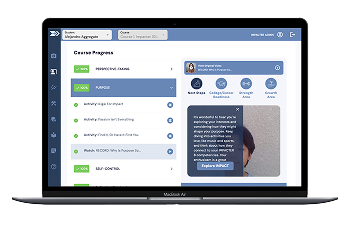In classrooms across the country, bilingual students are often told—implicitly or explicitly—that they need to “master English” before their learning is considered valid.
But research, neuroscience, and common sense tell us the opposite:
Language isn’t a barrier to learning. It’s a lens through which human growth is expressed.
The real question isn’t if students can reflect. It’s:
“Are we listening in the language they feel most human in?”
Bilingual Brains, Untapped Data
There are over 5 million English learners in U.S. public schools.
77% of them speak Spanish at home.
And that doesn’t include the millions of bilingual students who are not classified as ELs but grow up navigating two (or more) linguistic worlds.
Here’s the kicker:
Studies show bilingual students often outperform monolingual peers in cognitive flexibility, perspective-taking, and executive function (Barac & Bialystok, 2012).
Yet most assessment systems treat them as “at-risk” until their English reaches a certain threshold.
What if the problem isn’t the students?
What if it’s the metrics?
Why Traditional Assessments Miss the Mark
Most assessments rely on:
-
Written, linear text
-
Standard academic English
-
Culturally specific vocabulary
-
One-size-fits-all prompts
-
Response formats not optimized for expressive variation
This creates a data void for bilingual and multilingual learners.
Students with deep emotional insight, grit, or purpose may be dismissed as “low scoring” simply because they’re expressing their growth in a home language or non-standard syntax.
What IMPACTER Measures—And How Language Fits In
At IMPACTER, we’re not scoring grammar.
We’re scoring growth.
We analyze authentic spoken responses—in any language—and use our neural model to assess traits like:
-
???? Grit
-
???? Compassion
-
???? Perspective-Taking
-
???? Purpose
-
???? Growth Mindset
Our sentiment engine and attribute scorer are designed to capture tone, complexity, and developmental markers in both English and home languages like Spanish, Vietnamese, Tagalog, and Mandarin.
Because sentiment is universal—even when sentence structure isn’t.
In fact, our early pilots show:
-
Students reflecting in their home language are 41% more likely to describe real emotion (e.g., joy, frustration, hope, or fear)
-
And 2.2x more likely to offer specific examples tied to family or lived experience
That’s not data you want to lose. That’s data you want to design for.
The Science of Dual Language Expression
According to a 2021 study from the Center for Neurocognition and Multilingual Learning, bilingual speakers activate more diverse neural pathways when discussing emotional or moral topics in their first language (Kroll & Dussias, 2021).
The implication?
If you want real voice—authentic, unmasked, emotionally truthful voice—ask in a way students feel safe and fluent.
In other words: Don’t just allow multilingual reflection.
Expect it. Build for it. Normalize it.
???? Ready to assess character, purpose, and grit in the language your students actually live in?












